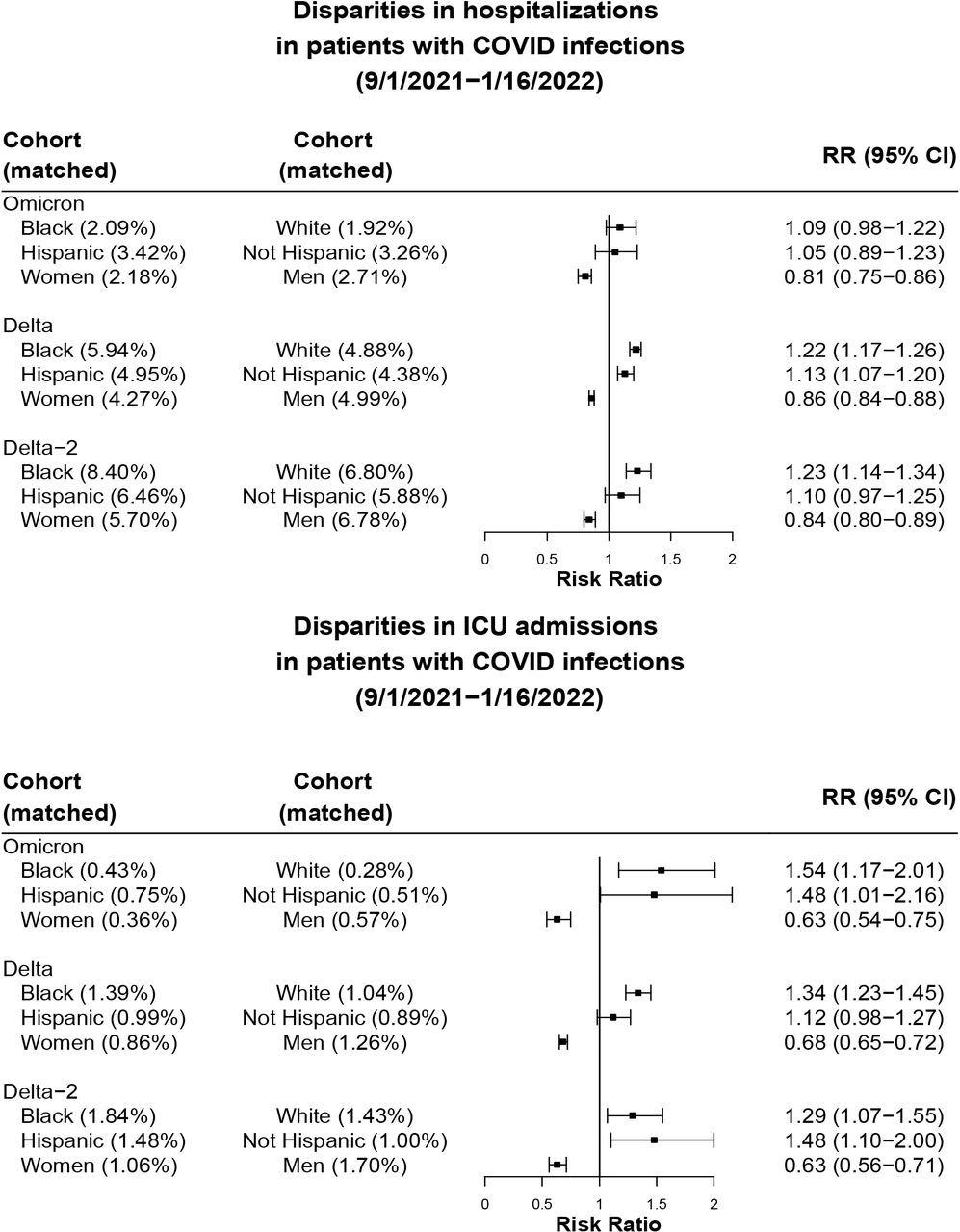Scientists from the Case Western Reserve University, USA, have recently conducted a study in collaboration with the National Institutes of Health, USA, to investigate the incidence rates and disease severity of severe acute respiratory syndrome coronavirus 2 (SARS-CoV-2) infection in the United States before and after the emergence of omicron variant. The study has also analyzed the impact of age, gender, and racial/ethnic variations on the infection rate and severity. The detailed findings of the research are currently available on the medRxiv* preprint server.

 This news article was a review of a preliminary scientific report that had not undergone peer-review at the time of publication. Since its initial publication, the scientific report has now been peer reviewed and accepted for publication in a Scientific Journal. Links to the preliminary and peer-reviewed reports are available in the Sources section at the bottom of this article. View Sources
This news article was a review of a preliminary scientific report that had not undergone peer-review at the time of publication. Since its initial publication, the scientific report has now been peer reviewed and accepted for publication in a Scientific Journal. Links to the preliminary and peer-reviewed reports are available in the Sources section at the bottom of this article. View Sources
Background
The most recently emerged omicron variant of SARS-CoV-2 has caused a sharp induction in infection rates worldwide, indicating the transmission advantage of the variant. Studies conducted in real-world setups have highlighted the potency of the variant in causing breakthrough infections in previously-infected or vaccinated persons. In addition, genome sequencing studies have indicated that a heavily mutated spike protein of the omicron variant might be responsible for its improved immune fitness.
In the current retrospective cohort study, the scientists have analyzed an extensive, geographically-diverse database of patients in the US to compare the infection rates and coronavirus disease 2019 (COVID-19) severity in patients infected with the omicron or delta variant. In addition, they have analyzed whether infection rate and disease severity vary with patient’s age, gender, and ethnicity.
Study design
The study was conducted on a large cohort of 881,473 patients who developed SARS-CoV-2 infection between September 2021 and January 2022. The patients who developed an infection during the omicron-dominated wave (147,964 patients) or delta-dominated wave (633,581 patients) were included in the study. In addition, about 99,928 patients who developed infection just before the detection of the omicron variant in the US were included.
Monthly incidence rates and disease severity were assessed and stratified by patients’ age groups, gender, and race/ethnicity. The disease severity assessment included emergency department visits, hospitalizations, intensive care unit (ICU) admissions and requirement of mechanical ventilation.
Infection rates during omicron and delta waves
The monthly incidence rate of COVID-19 was determined by measuring the number of new cases per 1000 individuals per day. During the delta-dominated wave, the incidence rate was 0.5 – 0.7, which increased rapidly to 3.8 – 5.2 during the omicron-dominated wave.
In January 2022, when the omicron variant was predominant, the highest incidence rate was observed among children under the age of 5 years. The rate was 6 – 9 times higher than during the delta-dominated wave. Notably, a reduction in the incidence rate was observed with increasing age. The patients aged 65 years and above showed the lowest incidence rate during the omicron-dominated wave.
Regarding racial and ethnic variation, Black and Hispanic patients showed higher incidence rates than White and non-Hispanic patients during both delta-dominated and omicron-dominated waves. However, the racial variation was more pronounced during the omicron wave.

Comparison of ED visits, hospitalization, ICU admission in the 3-day time-window that followed from the first day of SARS-CoV-2 infection between matched Black vs White patients, Hispanic vs non-Hispanic patients, women vs men in the Omicron, Delta, and Delta-2 cohorts, respectively. Race, ethnicity, or gender stratified cohorts were propensity-score matched for other demographics, socioeconomic factors, COVID-19-related health conditions, medications, and documented vaccination status.
Disease severity during omicron and delta waves
Significantly lower disease severity was observed during the omicron wave compared to that during the delta wave. This trend was observed in all age groups except for the 5 – 17 years.
The patients infected during the initial period of the delta wave had a higher rate of severe outcomes than those infected afterward (just before the initiation of the omicron wave). This could be because of waning vaccine efficacy, as mentioned by the scientists.
Compared to White and non-Hispanic patients, Black and Hispanic patients showed a significantly higher rate of emergency department visits during both delta and omicron waves. A similar racial/ethnic variation was observed for the rate of ICU admissions. However, no significant racial/ethnic variation was observed for hospitalization rates.
Regarding gender variation, female patients showed lower rates of emergency department visits, hospitalizations, and ICU admissions than male patients during both delta and omicron waves.
Study significance
The study reveals that the incidence rate of omicron infections is 6 – 8 times higher than that of delta infections in the United States. Omicron infections are associated with less severe outcomes than delta infections despite high transmissibility. For both delta and omicron infections, significant ethnic/racial and gender variations in disease severity have been observed in the study.

 This news article was a review of a preliminary scientific report that had not undergone peer-review at the time of publication. Since its initial publication, the scientific report has now been peer reviewed and accepted for publication in a Scientific Journal. Links to the preliminary and peer-reviewed reports are available in the Sources section at the bottom of this article. View Sources
This news article was a review of a preliminary scientific report that had not undergone peer-review at the time of publication. Since its initial publication, the scientific report has now been peer reviewed and accepted for publication in a Scientific Journal. Links to the preliminary and peer-reviewed reports are available in the Sources section at the bottom of this article. View Sources